Merida Reacto Disc 6000 review
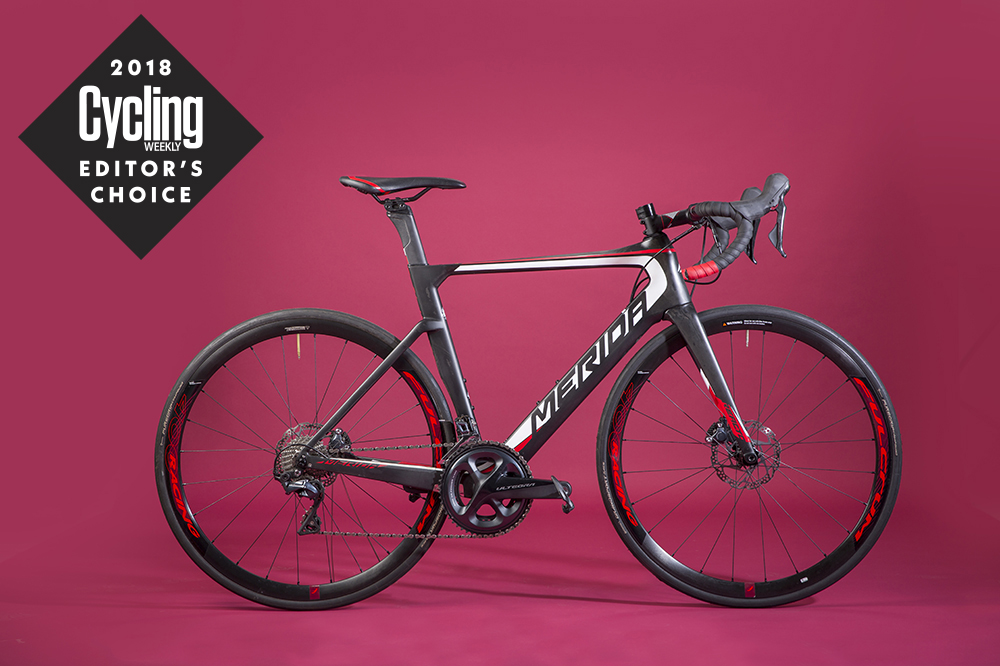
Merida has always been at the forefront of aero road bike design and its third generation Reacto builds on this expertise. Despite its edgy looks and leading aerodynamics, the Reacto Disc 6000 is an easy bike to live with, being plenty comfortable enough for longer rides and UK road surfaces. You get superb shifting from the Ultegra hydraulic groupset and the braking efficiency of discs and Merida’s cooling fins without, Merida says, significant aero disbenefits. The aero features do feel as if they give you a small extra turn of speed too.
-
+
Efficient aero frameset
-
+
Superb groupset
-
+
Above average adjustability for an aero bike
- +
-
-
Some buffeting in crosswinds
-
-
Quite high geared
-
-
Spacers under stem can move around
- -
You can trust Cycling Weekly.

The new third generation Merida Reacto looks to place Merida back at the top of the aero league table. It’s done that while still being comfortable and easy to live with, which is why it’s on our 2018 Editor’s Choice shortlist of the best products we’ve tested in the last year.
Merida launched its third generation Reacto aero road bike in 2017. It’s used by the Bahrain-Merida pro team of Vincenzo Nibali, who won the 2018 Milan-San Remo on a Reacto.
But the new Merida Reacto isn’t just one bike: there are two framesets with different geometries and grades of carbon, as well as rim and disc brake variants of each.
The Reacto Disc 6000 uses the lower modulus Reacto CF2 frameset. Next spec up is the Reacto Disc 7000, also using the CF2 frameset.
Above them in the disc brake range are the Reacto Disc 8000-E, the Reacto Disc 9000-E and the Reacto Disc Team-E, all of which use the pro-level Reacto CF4 frameset.
There’s an equivalent set of rim brake Reactos too, so the range is extensive. The Merida website shows 10 different Reactos, although strangely this does not include the Reacto 6000 Disc. Merida assures us that the bike is available for sale in the UK though. It differs from the lower spec Reacto Disc 5000, which is shown on the site, in having an Ultegra chainset and name brand wheels.
Frame
When Merida launched its second generation Reacto in 2014, independent aero testing placed it as the second fastest aero bike in the WorldTour. By the time the tests were repeated in 2016, although still in the top-10, the Reacto had slipped down the rankings as aero tech became ever more sophisticated.
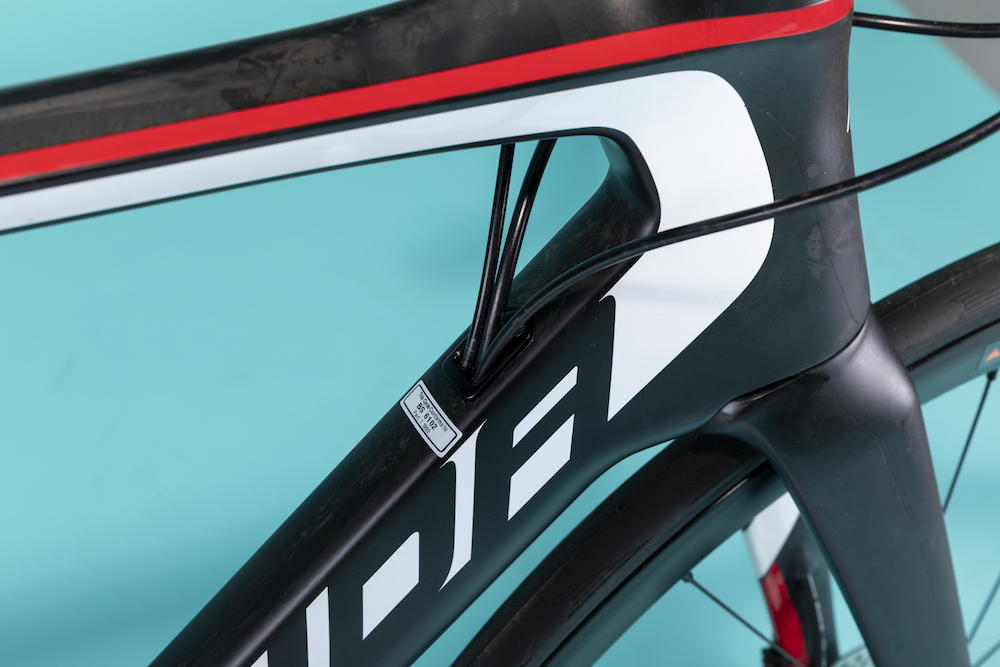
With the new third generation Reacto, Merida has sought to put its bike back at the top of the aero league, as well as making it lighter and more comfortable, without losing frame stiffness.
Merida says that there’s no significant loss of aero efficiency with the disc brake bike over using rim brakes, although frame weight increases by around 150g to cope with the different braking forces. It also avoids the rear brake rub that we found the rim brake model prone to when we rode it at the launch.
>>> Which bike is the fastest: Scott, Merida, Bianchi or Specialized?
The Reacto frame has a chunky, slab-sided kammtail down tube, a wide seat tube with a cut-out for the rear wheel and deep chainstays.
The seatstays are aero in section and join the seat tube some way down its length. They bow in slightly and, in contrast to many aero bikes, don’t have a pronounced outboard step at their seat tube junction.
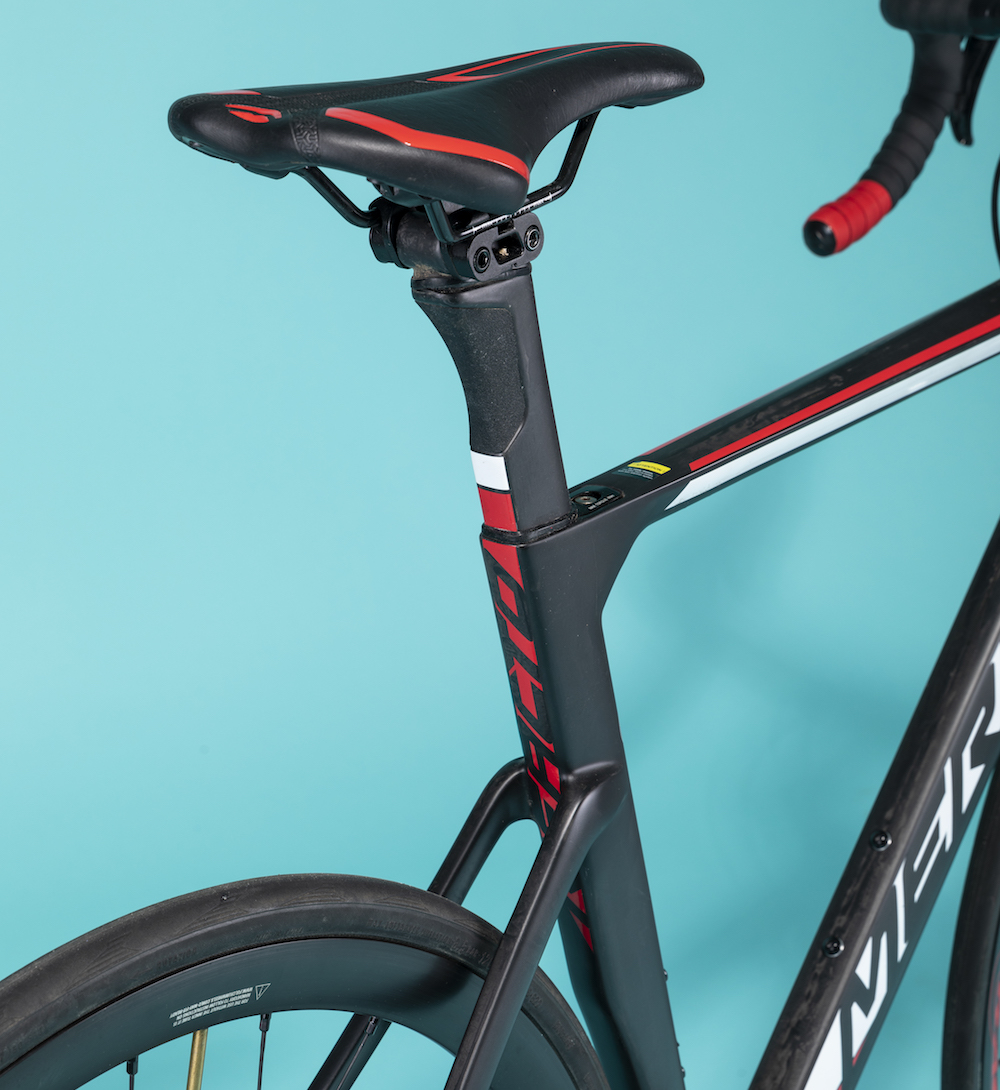
The CF2 frameset has a 15mm higher head tube than the CF4 frameset. It also comes with an aero carbon seatpost with a flippable head, so you can make the effective seat tube angle three degrees steeper.
There’s a separate bar and stem in contrast to the CF4’s one piece aerobar. Coupled with the seat post and head tube length, this gives more adjustability and a less aggressive riding position.
The Reacto Disc 6000 also comes with a stack of aero spacers below the stem. These are not anchored and I found that they could slip out of alignment as I rode. In contrast to the chunkiness of the other frame tubes, the top tube is quite svelte and has a nice sweep behind the stem to aid aerodynamics.
Specification
The Reacto Disc 6000 comes kitted out with Shimano’s superb Ultegra Hydraulic groupset. But although you get the latest R8000 gearing, the test bike does not have the latest generation salami-slicer rotors, as Shimano only makes these for its own centerlock standard. Shifting quality and braking are as efficient as you’d expect, despite this.
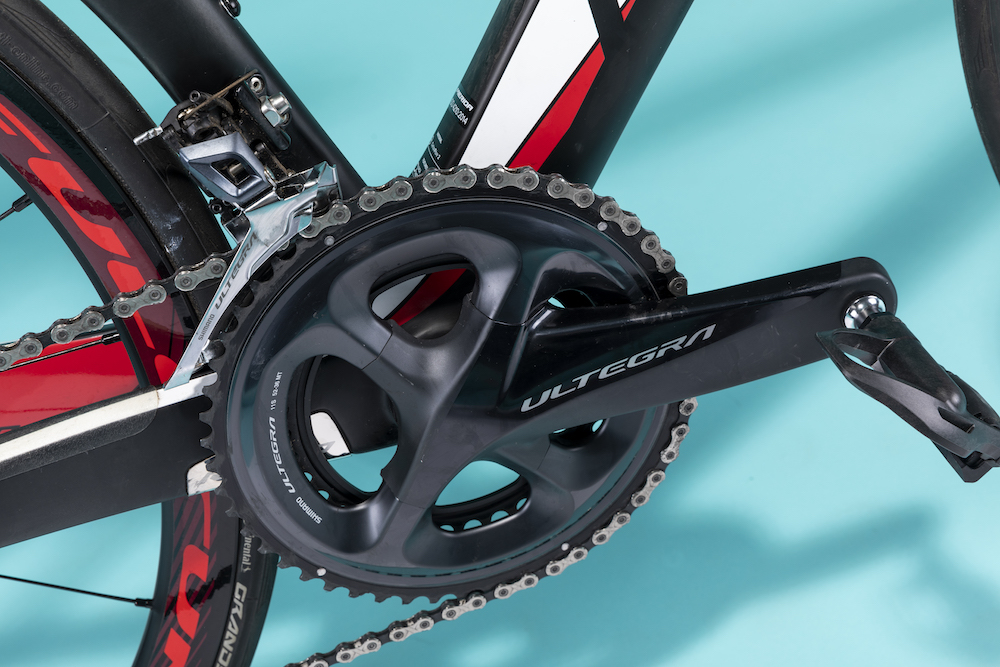
The Reacto Disc 6000’s wheels are Fulcrum Racing 400 alloy clinchers. At 35mm deep, they match the bike’s aero design without being overly aggressive. They come with straight pull spokes and 6-bolt rotor attachment.
I found the diameter of the tops of the Merida own-brand alloy aero bars slightly small, so there wasn’t quite the purchase and flat area to the tops that you’d get on a higher diameter aerobar.
Merida’s aero seat post, with its large elastomer insert in its rear face, provides better ride comfort than many aero posts.
The own-brand saddle is not the most comfortable I’ve used though and I found that I tended to slip forward on it as I rode.
Riding the Merida Reacto Disc
The Reacto Disc 6000 comes with a semi-compact 52/36 chainset and 11-28 cassette. It’s enough range to get you up most UK climbs without too much bother, although I did find that I needed more out-of-saddle efforts on Ivinghoe Beacon than with a wider range.
On the flip side, there’s plenty of upper range to tackle the faster sections for which the Reacto’s aero frameset feels well suited. The short cage Ultegra rear mech will cope with an 11-30 cassette if you feel you need the extra range.
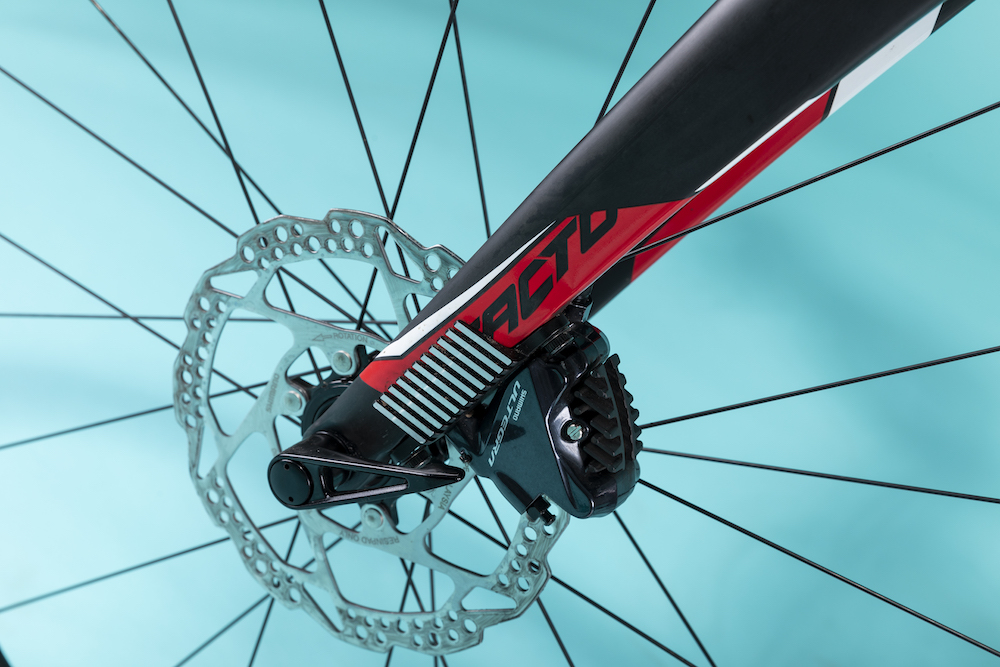
Although the wheels are not particularly deep section, the combination of wheels, rotors and slab-sided down tube made for a slightly edgy ride in crosswinds across the top of the Chilterns. It’s nothing scary, but I did feel buffeted more than on many other machines.
But humming along on flatter roads and on faster descents, the aero frame did feel as if it cut through the air that bit faster than a frame with round tube profiles. That aero edge is somewhat counterbalanced by the disc brake bike’s additional weight once you hit the uphills, though.
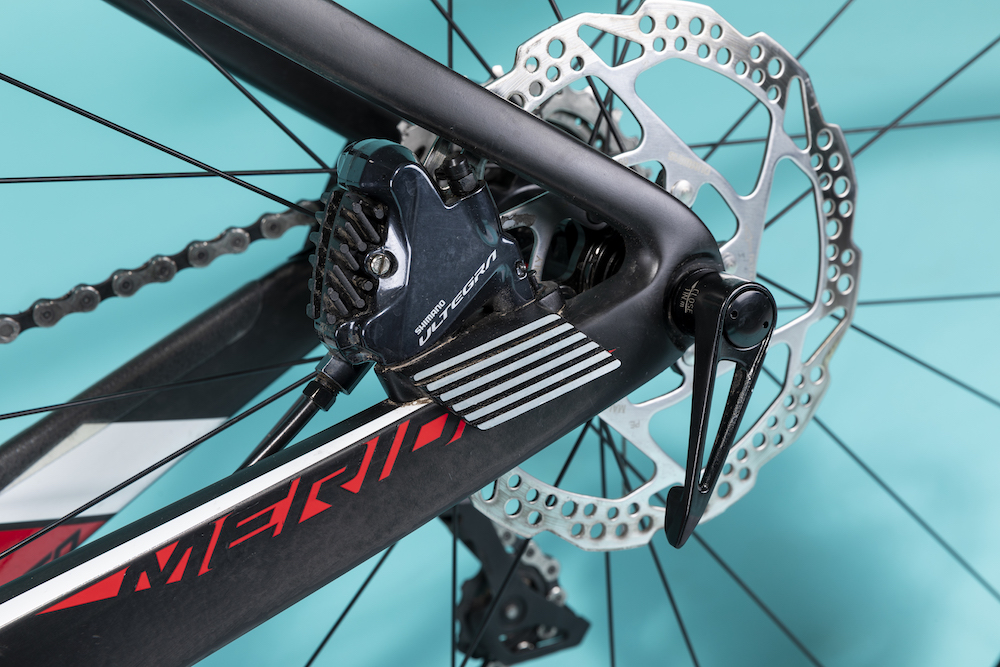
As you’d expect, the disc brakes provide a degree of reassurance on descents. Merida fits Shimano Icetech pads and there are cooling fins on the frame under the disc calipers.
It says that the fins drops the rotor temperature by up to 70C on long, hot descents. That’s not likely to be too much of an issue on hills in the south of the UK in March, but it’s nice to have anyway.
Although Merida has licensed Focus’s RAT quick release thru-axle system, this is not used on the test bike, which has conventional threaded thru-axles. Unless you’re racing with a following team car, it’s not likely that you’ll find the extra time taken to unscrew the wheel an issue though.
Value
At £3000, the Merida Reacto Disc 6000 is pretty much on the money for an Ultegra specced bike with hydraulic braking. Its aero frame clearly benefits from the trickle-down from Merida’s WorldTour team sponsorship, while being just that bit less aggressive and edgy to ride than its pro bikes.
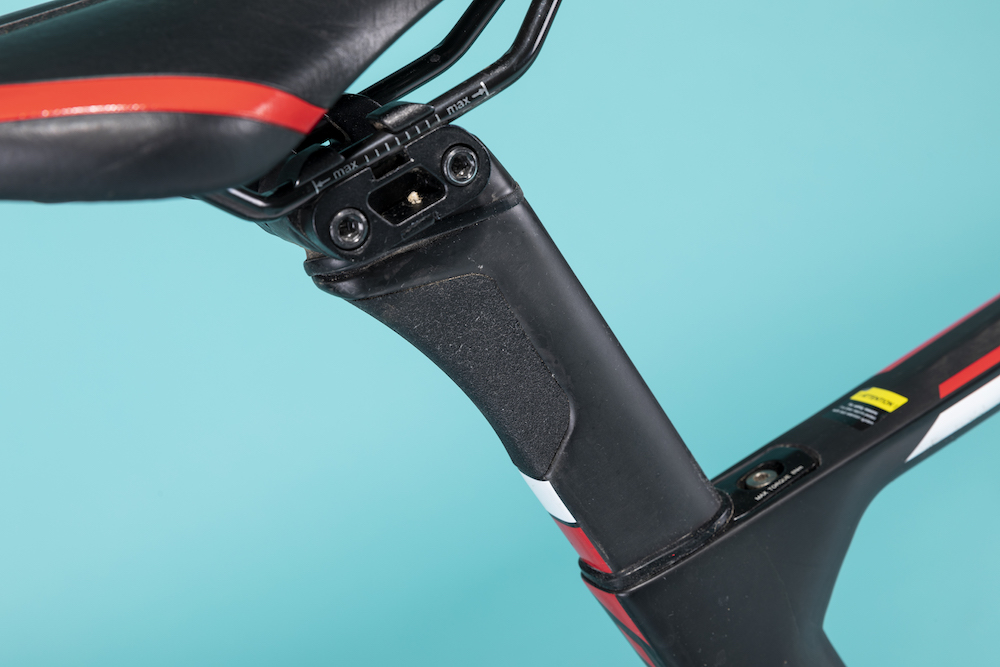
As such, with its slightly higher gearing and its disc brakes, it would be a good option for the faster cyclist wanting to ride UK sportives or to race, while still having the assurance of hydraulic braking.

Thank you for reading 20 articles this month* Join now for unlimited access
Enjoy your first month for just £1 / $1 / €1
*Read 5 free articles per month without a subscription

Join now for unlimited access
Try first month for just £1 / $1 / €1
Get The Leadout Newsletter
The latest race content, interviews, features, reviews and expert buying guides, direct to your inbox!
Paul started writing for Cycling Weekly in 2015, covering cycling tech, new bikes and product testing. Since then, he’s reviewed hundreds of bikes and thousands of other pieces of cycling equipment for the magazine and the Cycling Weekly website.
He’s been cycling for a lot longer than that though and his travels by bike have taken him all around Europe and to California. He’s been riding gravel since before gravel bikes existed too, riding a cyclocross bike through the Chilterns and along the South Downs.
-
 'The line was 5 metres too far' - Tadej Pogačar reacts to Amstel Gold Race second place
'The line was 5 metres too far' - Tadej Pogačar reacts to Amstel Gold Race second placeWorld champion reeled back and beaten in sprint by Lidl-Trek's Mattias Skjelmose
By Tom Davidson Published
-
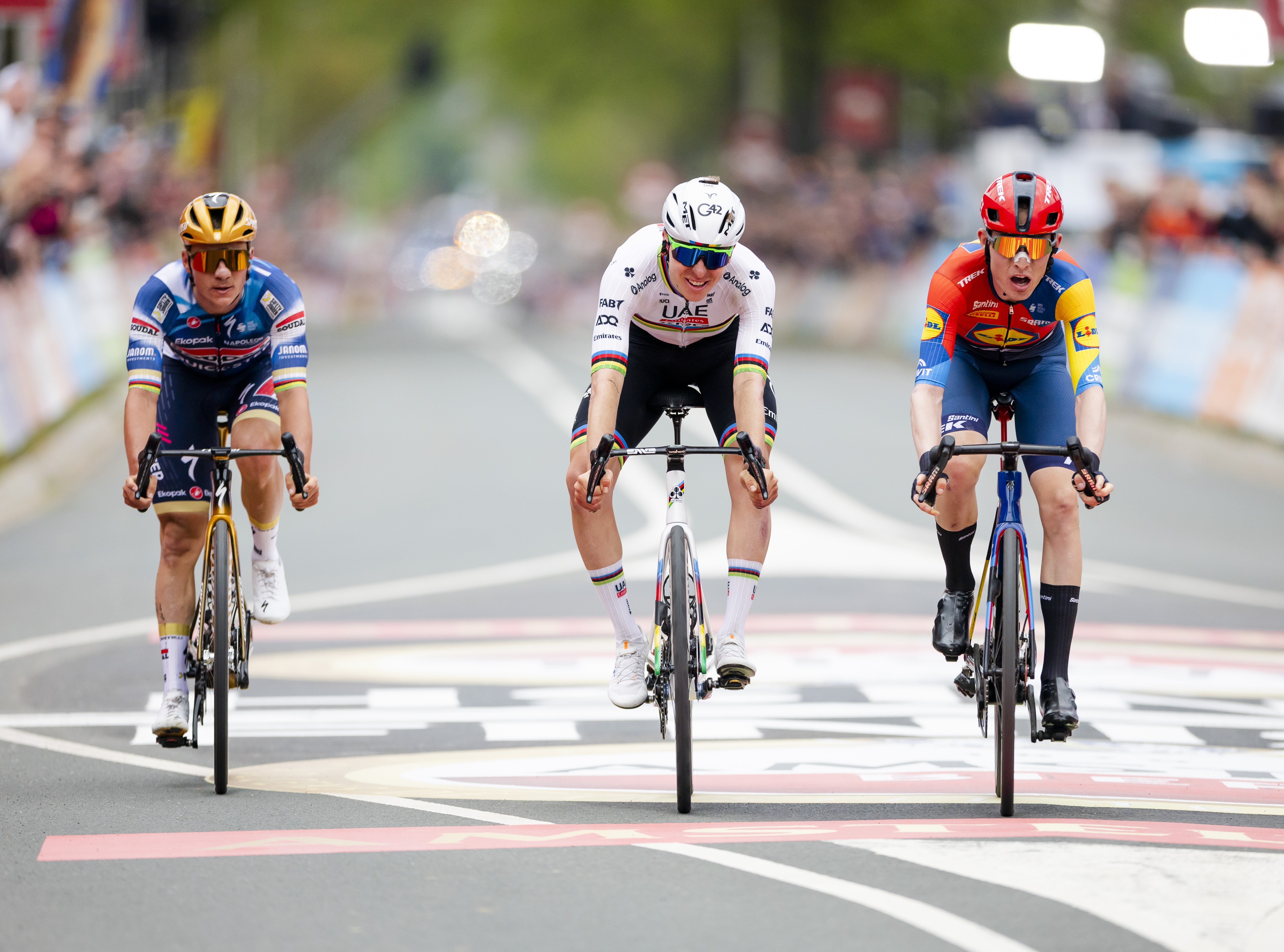 'I was riding for the podium' - Mattias Skjelmose pulls off shock Amstel Gold Race win after reeling back Tadej Pogačar attack
'I was riding for the podium' - Mattias Skjelmose pulls off shock Amstel Gold Race win after reeling back Tadej Pogačar attackDane worked with Remco Evenepoel to set up stunning three-way finale
By Tom Davidson Published
-
 'All or nothing' - Mischa Bredewold wins Amstel Gold Race with stinging late attack
'All or nothing' - Mischa Bredewold wins Amstel Gold Race with stinging late attackDutchwoman takes first big Classics win of her career
By Tom Davidson Published